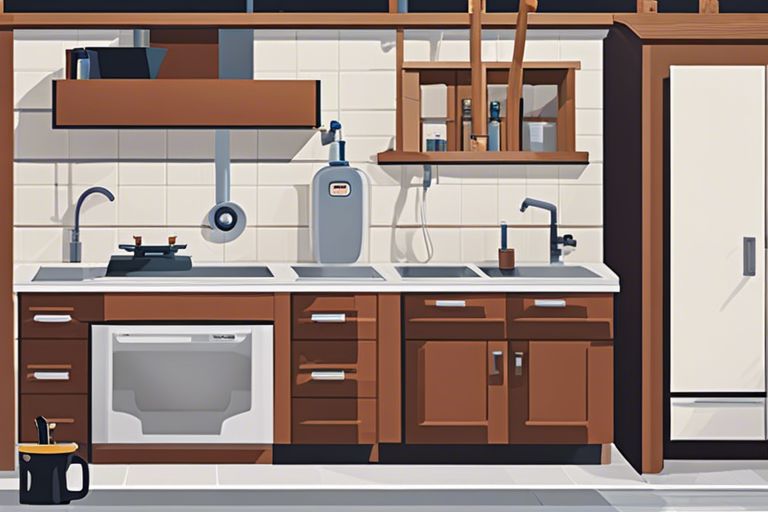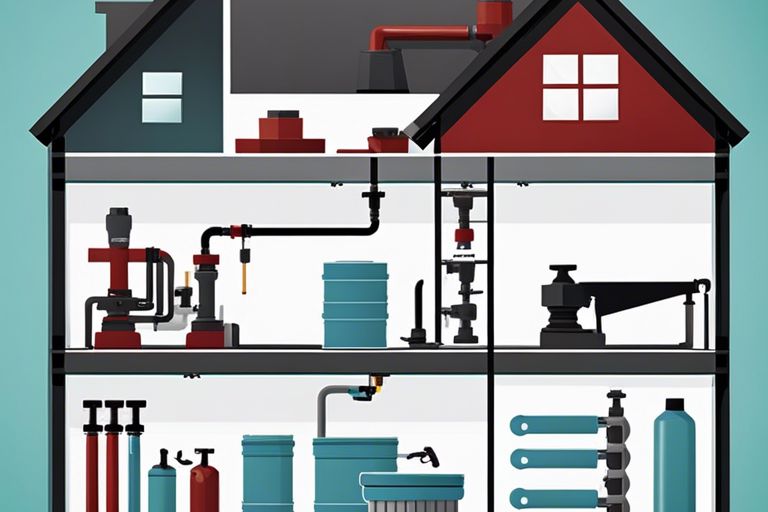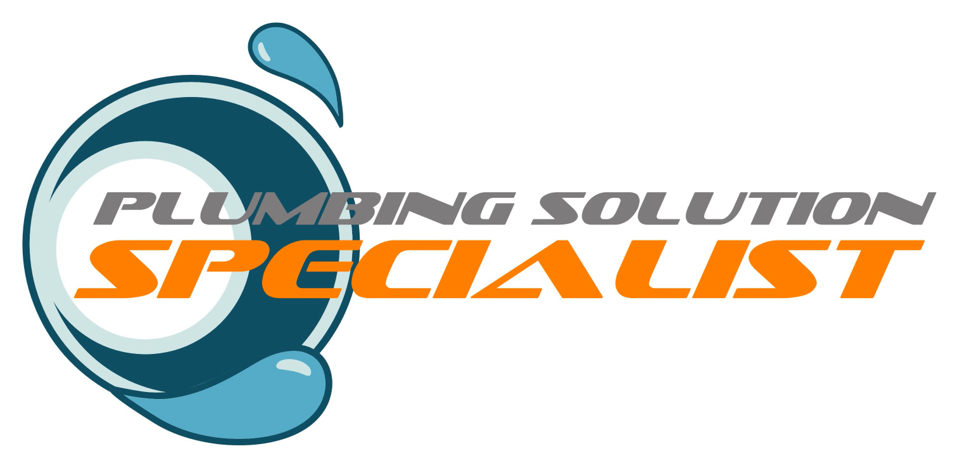Most importantly, understanding the whole house repiping process can save you time and money. Repiping your entire home can seem like a daunting task, but with this step-by-step guide, you will know exactly what to expect. From the initial assessment to the final inspection, replacing all the pipes in your home is a significant project that requires careful planning and execution. Here’s what you can anticipate throughout the repiping process.
Key Takeaways:
- Assessment: A professional plumber will assess the existing plumbing system to determine the extent of the damage and the best course of action for repiping.
- Material Options: You’ll have different material options for repiping your house, such as copper, PEX, or CPVC, each with its own pros and cons.
- Process: The repiping process involves shutting off water, removing old pipes, installing new pipes, and restoring water flow, which can take a few days to complete.
Understanding Whole House Repiping
What is Whole House Repiping?
One of the biggest plumbing projects you may face as a homeowner is whole house repiping. This process involves replacing all the pipes in your home with new ones. Over time, your pipes can deteriorate due to age, corrosion, or mineral buildup, leading to leaks, low water pressure, and other issues.
Whole house repiping is a comprehensive solution to upgrade your plumbing system and ensure the efficient flow of water throughout your home.
Why is Whole House Repiping Necessary?
For many homeowners, the idea of whole house repiping can seem daunting. However, it is necessary when your current pipes are old, damaged, or causing recurring problems. Old pipes are more prone to leaks, burst pipes, and water damage, which can result in costly repairs and potential health hazards.
Repiping your home can improve your water quality, increase water pressure, and prevent future plumbing emergencies, giving you peace of mind and a more functional plumbing system.

Types of Piping Materials
Now, when it comes to whole house repiping, there are several piping materials that you can choose from. Each material has its own unique properties, pros, and cons, so it’s important to understand the differences between them before making a decision. Here are some of the most common piping materials used in whole house repiping:
Copper Piping
Piping made of copper is a popular choice for repiping projects due to its durability and resistance to corrosion. Copper piping is known for its long lifespan, typically lasting up to 50 years or more with proper maintenance. It is also a safe option for carrying drinking water, as copper does not leach harmful chemicals into your water supply. If you choose copper piping for your whole house repiping project, you can expect a reliable and long-lasting solution for your plumbing system. The initial cost of copper piping may be higher compared to other materials, but the investment is worth it in the long run due to its durability and low maintenance requirements. Any repairs or replacements needed for copper piping are typically straightforward and less frequent compared to other materials.
PEX Piping
If you are looking for a more cost-effective and flexible piping material for your whole house repiping project, PEX piping is a popular choice. PEX piping is made of cross-linked polyethylene, making it resistant to chemicals and extreme temperatures. The flexibility of PEX piping allows for easy installation around corners and obstacles, reducing the need for additional fittings and connections. Materials: | Pros: | — | — Copper | – Durable and corrosion-resistant | PEX | – Cost-effective and flexible | Galvanized | – Strong and reliable | PVC | – Lightweight and easy to install | Steel | – Resistant to extreme temperatures |
Galvanized Piping
To ensure a strong and reliable plumbing system, you may consider using galvanized piping for your whole house repiping project. Galvanized piping is made of steel pipes coated with a layer of zinc, making it resistant to corrosion and rust. This type of piping is commonly used in older homes and can last up to 50 years with proper maintenance. Copper piping is a great option for whole house repiping due to its durability and resistance to corrosion. It is a safe choice for carrying drinking water, as copper does not leach harmful chemicals into your water supply. If you opt for copper piping, you can expect a reliable and long-lasting plumbing system that requires minimal maintenance.
PVC Piping
Little maintenance and a lightweight option for whole house repiping project, PVC piping is a popular choice for its affordability and ease of installation. PVC piping is resistant to corrosion and chemicals, making it a durable option for your plumbing system. It is also lightweight and easy to work with, reducing labor costs and installation time. Understanding the differences between various piping materials will help you make an informed decision for your whole house repiping project. Each material has its own set of benefits and drawbacks, so consider your budget, needs, and preferences before selecting the right piping material for your home. Do not forget, investing in high-quality piping materials will ensure a reliable and efficient plumbing system for years to come.

Factors to Consider Before Repiping
Unlike minor plumbing repairs, whole house repiping is a major undertaking that requires careful consideration. Before deciding to repipe your home, there are several factors you should take into account to ensure the process goes smoothly and meets your needs.
Age and Condition of Existing Pipes
For whole house repiping, the age and condition of your existing pipes play a crucial role in determining whether you need to replace them. If your home has old galvanized pipes that are showing signs of corrosion, leaks, or frequent clogs, it may be time to consider repiping. Knowing the materials used in your current piping system and their condition will help you make an informed decision about whether repiping is necessary.
Water Quality and Pressure
There’s more to repiping than just replacing old pipes. Water quality and pressure are also important factors to consider before undergoing a whole house repiping project. For instance, if you have hard water that causes mineral buildup in your pipes, it can lead to reduced water pressure and flow. Addressing water quality issues during the repiping process can help improve the overall performance and longevity of your new plumbing system.
Budget and Cost Considerations
Condition your existing pipes and water quality can impact the overall cost of a whole house repiping project. Before making a decision, it’s imperative to consider your budget and cost considerations. Get quotes from multiple plumbing companies to compare prices and services offered. Keep in mind that investing in high-quality materials and professional installation may cost more upfront but can save you money in the long run by preventing future plumbing issues.
Home Size and Layout
Considerations your home’s size and layout are also important factors to keep in mind before repiping. The size of your home will affect the total length of piping needed for the project, while the layout can impact the complexity of the installation process. Factors such as the number of bathrooms, kitchens, and floors in your home will determine the extent of the repiping project and the resources required to complete it.
Step-by-Step Guide to Whole House Repiping
Keep in mind that whole house repiping is a major home improvement project that requires careful planning and execution. Here is a step-by-step guide to help you understand what to expect during the process.
| Shutting Off Water Supply | Draining the System |
| On the scheduled day of repiping, the first step is to shut off the main water supply to your home. This is done to prevent any water from flowing through the pipes during the repiping process. | Now that the water supply is shut off, the next step is to drain the entire plumbing system. This ensures that there is no water left in the pipes, making it easier to remove the old pipes and install new ones. |
Shutting Off Water Supply
House repiping is a messy and labor-intensive process that requires precision and expertise. Ensuring that the water supply is turned off before starting the project is crucial to avoid any water damage or accidents during the repiping process.
Draining the System
Whole house repiping involves removing all the old pipes in your home and replacing them with new ones. Draining the system completely helps in minimizing any potential mess and water damage that could occur during this process.
Removing Old Pipes
Whole house repiping involves removing all the old pipes in your home to make way for the new ones. This process can be time-consuming and may require cutting into walls and ceilings to access the pipes.
Installing New Pipes
To ensure the longevity and efficiency of your new plumbing system, it is crucial to install high-quality pipes that meet current building codes and standards. With the old pipes removed, the next step is to carefully install the new pipes throughout your home.
With the new pipes in place, you can expect improved water flow, water pressure, and overall performance of your plumbing system. This upgrade will not only enhance the functionality of your home but also increase its value.
Reconnecting Fixtures and Appliances
For a successful whole house repiping project, it is necessary to reconnect all fixtures and appliances to the new plumbing system. This includes connecting sinks, showers, toilets, and any other water-using appliances in your home.
Guide
It is important to follow the guidance of professional plumbers during the whole house repiping process to ensure a seamless and high-quality outcome. They will be able to navigate any challenges that may arise and address them effectively to complete the project efficiently.
Tips for a Successful Repipe
Despite the complexity and scale of a whole house repiping project, with the right approach and planning, you can ensure a successful outcome. Here are some vital tips to keep in mind:
- Hiring a Professional Plumber: If you want your whole house repiping project to go smoothly, it’s crucial to hire a professional plumber with experience in handling such extensive jobs. Look for a licensed and insured plumber who specializes in repiping to ensure quality workmanship and adherence to building codes.
- Planning for Disruptions: Professional planning and communication are key to managing disruptions during a repiping project. Be prepared for temporary water shutoffs, potential wall or floor openings, and noise. Discuss the timeline with your plumber to minimize inconveniences and make alternate arrangements if needed.
Hiring a Professional Plumber
If you want your whole house repiping project to be successful, hiring a skilled plumber is vital. A professional plumber will assess your existing plumbing system, create a comprehensive plan for the repiping process, and execute the project efficiently while ensuring compliance with regulations.
Planning for Disruptions
Professional planning is crucial when preparing for disruptions during a whole house repiping project. You should anticipate potential inconveniences such as water outages and structural modifications. By coordinating with your plumber and making contingency plans, you can minimize the impact on your daily routine.
Choosing the Right Materials
Tips for choosing the right materials for your repiping project include selecting high-quality pipes that are resistant to corrosion and leaks. Consider factors such as material longevity, cost-effectiveness, and compatibility with your existing plumbing system to ensure a durable and efficient repiping solution.
This will help you avoid future issues and costly repairs due to inferior materials.
Inspecting and Testing the System
Materials used in repiping, such as copper or PEX pipes, must be inspected and tested for quality and compatibility with your home’s plumbing system. Before completing the project, a thorough inspection and testing process should be carried out to identify any leaks, defects, or inadequate connections.
Planning for regular maintenance and inspections of your repiped system can help you detect and address issues early, ensuring the longevity and efficiency of your new plumbing.
Pros and Cons of Whole House Repiping
Once again, it’s crucial to understand the pros and cons of whole house repiping before making a decision. Here is a breakdown of the benefits and drawbacks you should consider:
| Pros | Cons |
| Improved water quality | Disruption to your home during the repiping process |
| Elimination of leaks and water damage | Cost of the repiping project |
| Increased home value | Potential unexpected issues that may arise |
| Long-term cost savings on repairs | Temporary inconvenience of not having water during repiping |
Benefits of Repiping
Cons
When you opt for whole house repiping, you can enjoy several benefits. Improved water quality is one of the significant advantages. With new pipes in place, you won’t have to worry about contaminants or impurities affecting your water supply. Additionally, the elimination of leaks and water damage can save you from costly repairs in the long run. By investing in repiping, you can increase the overall value of your home and ensure that your plumbing system is reliable for years to come.
Drawbacks and Potential Issues
Pros
With any home improvement project, there are drawbacks and potential issues to consider. One of the main cons of whole house repiping is the disruption it can cause to your daily routine. The process involves tearing out old pipes and installing new ones, which can be messy and inconvenient. The cost of the repiping project is another factor to take into account. While it may seem like a significant investment upfront, the long-term cost savings on repairs can outweigh the initial expense. However, there may be unexpected issues that arise during the repiping process, so it’s crucial to be prepared for any challenges that may come your way.
Conclusion
On the whole, repiping your entire house is a significant project that can greatly improve the functionality and reliability of your plumbing system. By following this step-by-step guide, you now have a better understanding of what to expect during the whole house repiping process. From planning and preparation to the completion of the project, you can be prepared for the potential challenges and benefits that come with this home improvement task.
Remember to work with experienced professionals, adhere to local building codes, and communicate openly with your contractors throughout the repiping process. With proper planning and execution, your newly repiped home will provide you with peace of mind and reliable plumbing for years to come. So, if you’re considering a whole house repiping project, now you know what to expect and can confidently move forward with this beneficial upgrade for your home.
FAQ
Q: What is whole house repiping?
A: Whole house repiping is the process of replacing all of the old or damaged pipes in a house with new ones. This is usually done to improve the plumbing system’s efficiency, prevent leaks, and ensure the safety of the water supply.
Q: How do I know if my house needs repiping?
A: Some signs that your house may need repiping include frequent leaks, low water pressure, discolored water, and rusty or corroded pipes. It is best to consult with a licensed plumber to inspect your plumbing system and recommend the necessary repairs.
Q: What can I expect during the whole house repiping process?
A: During the whole house repiping process, you can expect the plumber to first assess the current plumbing system, create a plan for the repiping project, and then proceed with removing the old pipes and installing the new ones. This process can take several days to complete, depending on the size of the house and the extent of the repiping needed.
